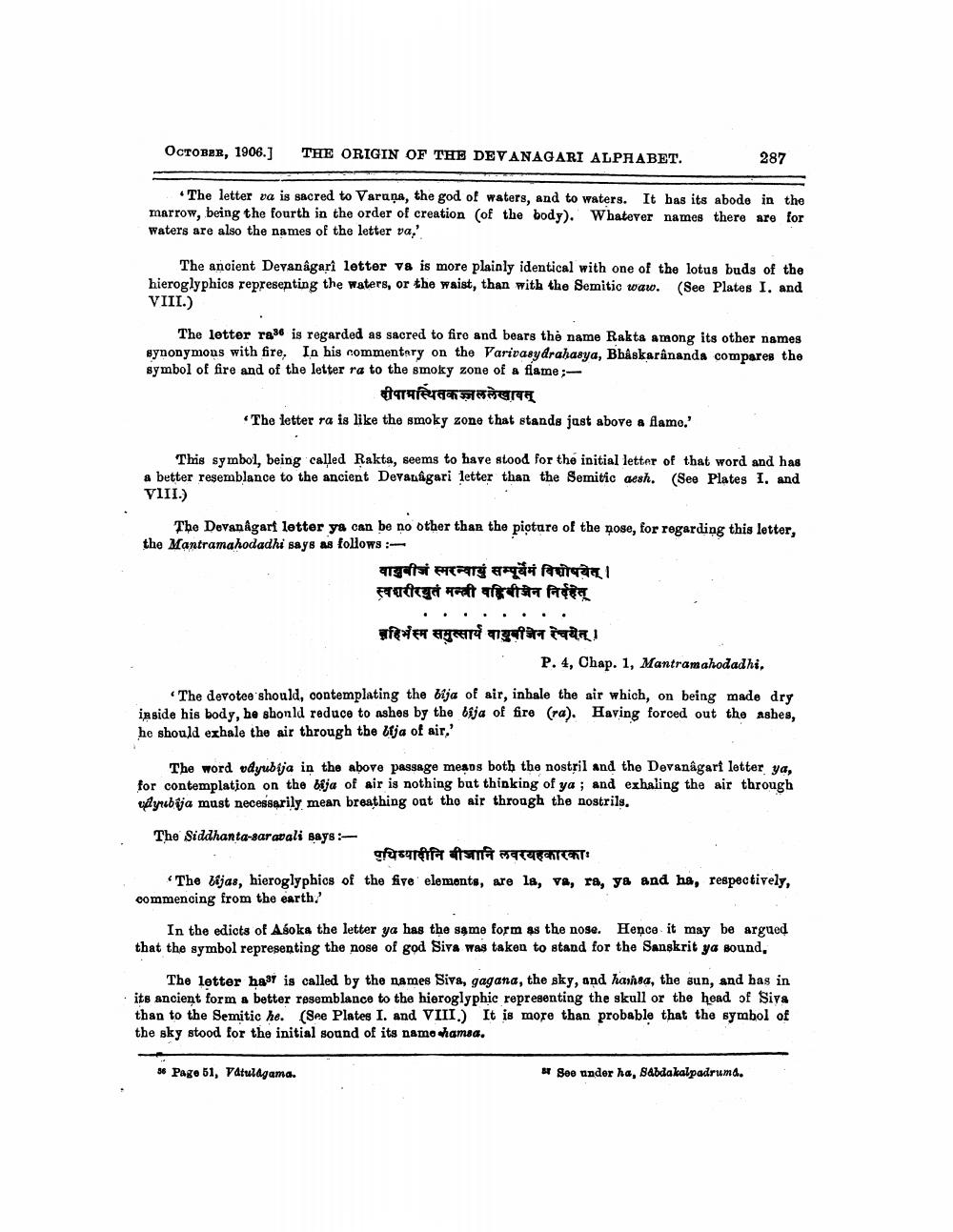________________
OCTOBER, 1906.]
THE ORIGIN OF THE DEVANAGARI ALPHABET.
287
The letter va is sacred to Varana, the god of waters, and to waters. It bas its abode in the marrow, being the fourth in the order of creation of the body). Whatever names there are for waters are also the names of the letter var!
The ancient Devanagari letter va is more plainly identical with one of the lotus buds of the hieroglyphics representing the waters, or the waist, than with the Semitic waw. (See Plates I. and
VIII.)
The letter ra36 is regarded as sacred to fire and bears the name Rakta among its other names synonymous with fire, In his commentary on the Varivasy drahasya, Bhaskarananda compares the symbol of fire and of the letter ra to the smoky zone of a flame;
दीपामस्थितकजललेखावत् The letter ra is like the smoky zone that stands jast above a flame.'
This symbol, being called Rakta, seems to have stood for the initial letter of that word and has a better resemblance to the ancient Devanagari letter than the Semitic aesh. (See Plates I. and VIII.)
The Dovanagart letter ya can be no other than the pişture of the nose, for regarding this letter, the Mantramahodadhi says as follows:
वाजबीजं स्मरन्वायुं सम्पूर्वेमं विशोषयेत् । स्वधरीरयुतं मन्त्री पहिबीजेन निर्दहेत
ब्राहिम समुत्सार्य वायुबीजेन रेचयेत् ।
P. 4, Chap. 1, Mantramahodadhi. The devotee should, contemplating the bija of air, inhale the air which, on being made dry inside his body, he shonld reduce to ashes by the bija of fire (ra). Having forced out the ashes, he should exhale the air through the Ilja of air,
The word vdyubija in the above passage means both the nostril and the Devanagari letter ya, for contemplation on the bfja of air is nothing but thinking of ya ; and exhaling the air through vidyub ja must necessarily mean breathing out tho air through the nostrils.
The Siddhanta-saravali says:
पृथिव्यादीनि बीजानि लवरयहकारकाः *The bijas, hieroglyphics of the five elemente, are la, va, ra, ya and ha, respectively, commencing from the earth/'
In the edicts of Asoka the letter ya has the same form as the nose. Hence it may be argued that the symbol representing the nose of god Siva was taken to stand for the Sanskrit ya sound,
The letter hat is called by the names Siva, gagana, the sky, and hainsa, the sun, and has in its ancient form a better resemblance to the hieroglyphic representing the skull or the head of Siva than to the Semitic he. (See Plates I. and VIII.) It is more than probable that the symbol of the sky stood for the initial sound of its name hamsa.
56 Page 51, 7dtuldgama.
# See under ha, sabdakal padruma.




